Kindly advise how a properly fitted vest should look.
TIA
Vest Fit
-
Guest
The problem with waistcoats is really to have them cut to co-ordinate well with the coat worn over it, and with the trouser waistband.
In general, they should fit comfortably close to the waist without being tight.

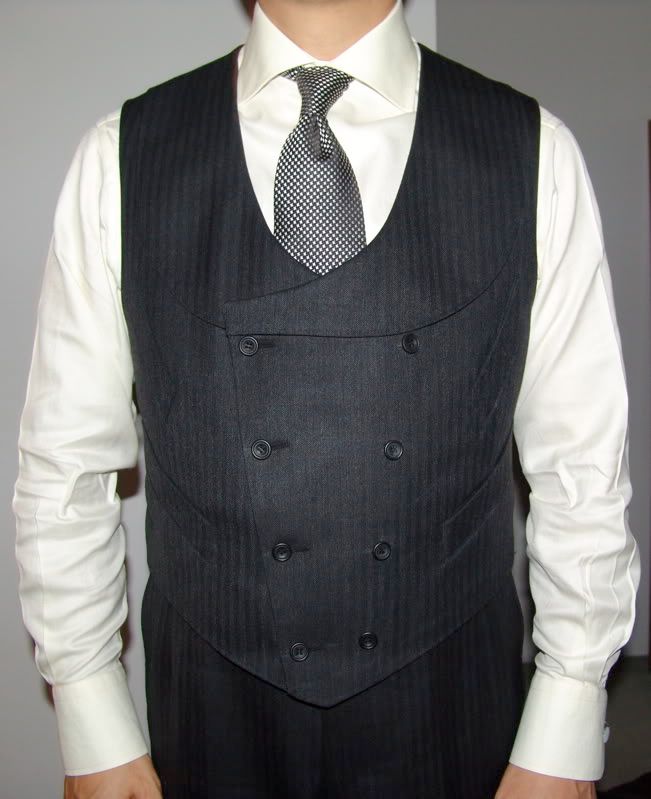
They must be long enough to fully cover the waistline of the trousers at all times. However, it need not be cut to sit significantly lower than the waistline. I like mine as short as possible. The trousers should be cut with a higher rise to avoid the waistband from showing, and as brace trousers to avoid the buckle causing an unsightly bulge under the waistcoat front.
The top of the waistcoat should show a little behind the lapels of the coat worn over. With a SB W-C, the top button should be visible.
If it is for morning dress, the waistcoat should show a little below the coat when it is buttoned up:
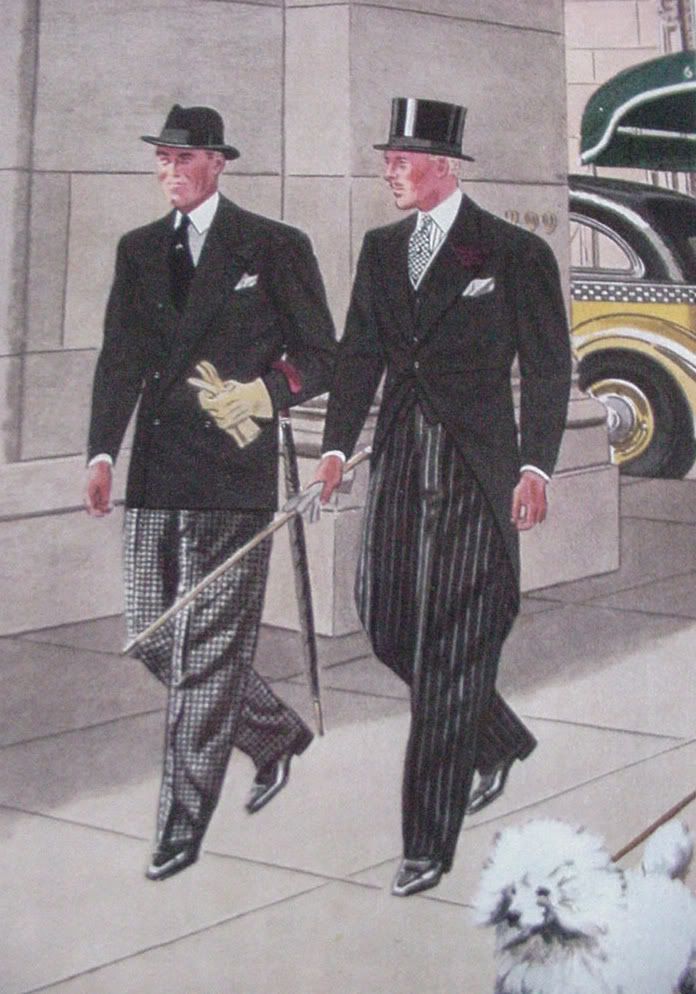
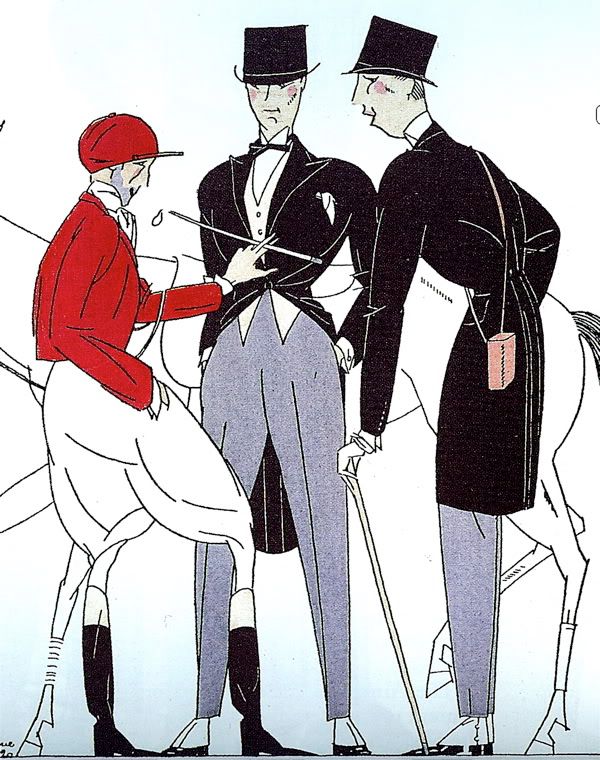
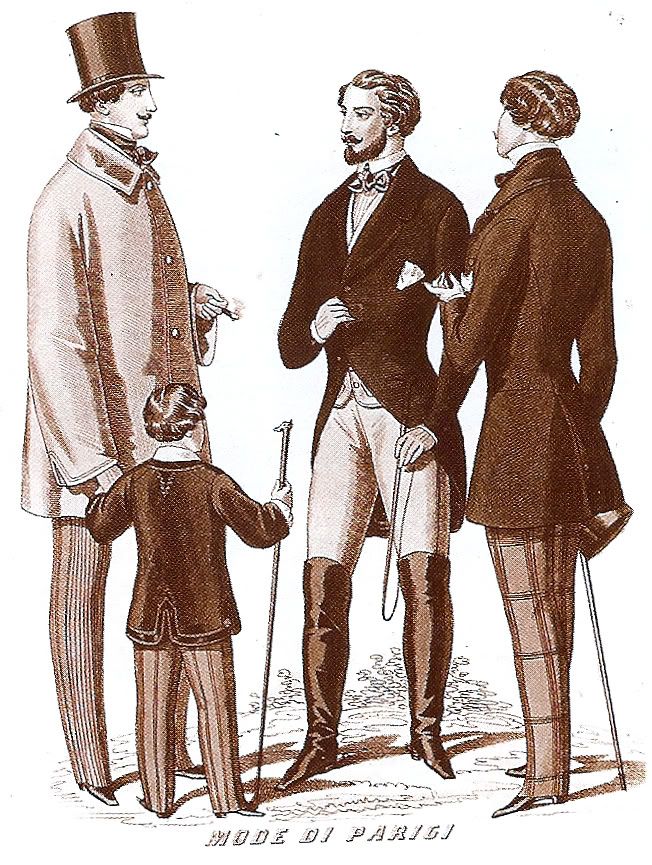
If it is for evening full dress, the bottom of the waistcoat should be 1/2" shorter than the cut away fronts of the dress coat. The waistcoat should also be low cut.
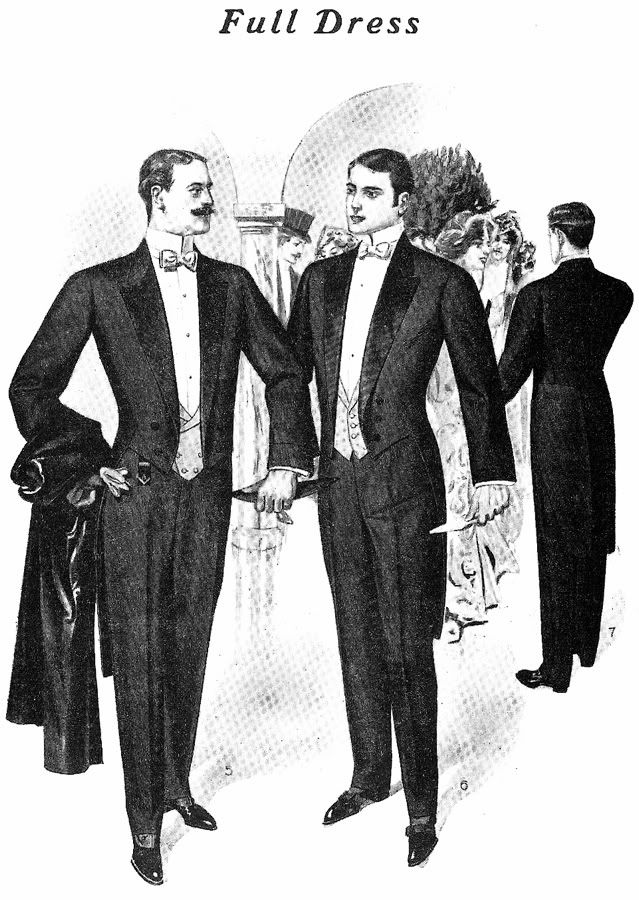
To successfully fulfil all of these criterion waistcoats need to be made by your tailor to co-ordinate with your coat and trousers.
SATOR
AREPO
TENET
OPERA
ROTAS
In general, they should fit comfortably close to the waist without being tight.


They must be long enough to fully cover the waistline of the trousers at all times. However, it need not be cut to sit significantly lower than the waistline. I like mine as short as possible. The trousers should be cut with a higher rise to avoid the waistband from showing, and as brace trousers to avoid the buckle causing an unsightly bulge under the waistcoat front.
The top of the waistcoat should show a little behind the lapels of the coat worn over. With a SB W-C, the top button should be visible.
If it is for morning dress, the waistcoat should show a little below the coat when it is buttoned up:



If it is for evening full dress, the bottom of the waistcoat should be 1/2" shorter than the cut away fronts of the dress coat. The waistcoat should also be low cut.

To successfully fulfil all of these criterion waistcoats need to be made by your tailor to co-ordinate with your coat and trousers.
SATOR
AREPO
TENET
OPERA
ROTAS
-
Guest
The dress coats in the last picture look very long (the waist seam looks to be several inches below the waist itself). The corner between the tails and front on my coat comes pretty much to the narrowest part of my torso. Does the picture show an earlier (maybe mid-Victorian) style, judging from the collar and dress boots, or is my 1930s coat just too high? In fact, from most of the pictures you post, it seems that the length of the leg is emphasised, with the front cut away to reveal the shape of the hips, with long lapels etc. emphasise the shoulders as well. On the other hand, this plate is showing off the chest itself and its length. The total height of the overlap for the waistcoat looks about right, but it seems to be sitting too low perhaps for modern (inter-War) tastes.
-
Guest
It comes from the Blue Book, 1907. The pattern is based on a natural waist of 17" and a fashion waist of 18.5" for a 36" chest. Adding 1.5" to the natural waist at the back is not considered that long waisted - about average, although many cutters recommend adding only 1".
The fashion waist seam length is measured at the back. The measure is applied to the draft of the back panels. The waist seam is then allowed to angle downwards as it moves to the front, ending up about a 1.5-2" below the fashion waist level at the back.
Cutting the waist seam starting on the natural waist at the back is considered very short waisted to the point of being a bit extreme, although there were apparently cutters in the late 19th-early 20th C who tried it. Cutting the front of the waist seam to sit on the natural waist is even more extreme, and hasn't been done since the early 19th century.
A.A. Whife 1951 recommends adding 1" to the natural waist at the back, commenting that:
A more extreme style is sometimes adopted in which the fashion waist is placed on the "natural" position - but this is not really considered satisfactory
I have studied every dress coat pattern I can get my hands on and studied this point, so I know a bit about it.
Sator
The fashion waist seam length is measured at the back. The measure is applied to the draft of the back panels. The waist seam is then allowed to angle downwards as it moves to the front, ending up about a 1.5-2" below the fashion waist level at the back.
Cutting the waist seam starting on the natural waist at the back is considered very short waisted to the point of being a bit extreme, although there were apparently cutters in the late 19th-early 20th C who tried it. Cutting the front of the waist seam to sit on the natural waist is even more extreme, and hasn't been done since the early 19th century.
A.A. Whife 1951 recommends adding 1" to the natural waist at the back, commenting that:
A more extreme style is sometimes adopted in which the fashion waist is placed on the "natural" position - but this is not really considered satisfactory
I have studied every dress coat pattern I can get my hands on and studied this point, so I know a bit about it.
Sator
-
Guest
My few vests sit very close to the body and do not ripple anywhere when standing up; they just cover the top of the trousers.
However, when sitting, the cloth pulls at the buttons.
In future, I think that I will ask for a larger cut vest as well as a bit longer, to ensure more of the trousers are covered; it is easy to get the vest too fitted everywhere and this is a detriment when one puts on a few extra pounds or indeed wears different trousers than originally fitted for the vest.
Sator's illustrations and commentary is very nice indeed.
However, when sitting, the cloth pulls at the buttons.
In future, I think that I will ask for a larger cut vest as well as a bit longer, to ensure more of the trousers are covered; it is easy to get the vest too fitted everywhere and this is a detriment when one puts on a few extra pounds or indeed wears different trousers than originally fitted for the vest.
Sator's illustrations and commentary is very nice indeed.
-
Guest
A further investigation reveals that my tails do sit a bit lower than I was remembering. The waistline in your picture still looks a lot lower than in the following picture though. Perhaps it is the width and roll of the lapels.

Anyway, it seems every question I ask, we find out some fresh gem from one of Sator's tailoring books. I must get one some time (or venture into the recesses of the library, which of course has a copy of everything...).
NCW (the post about the low waists was mine as well: the signature in the preview window tricks me every time).

Anyway, it seems every question I ask, we find out some fresh gem from one of Sator's tailoring books. I must get one some time (or venture into the recesses of the library, which of course has a copy of everything...).
NCW (the post about the low waists was mine as well: the signature in the preview window tricks me every time).
-
- Information
-
Who is online
Users browsing this forum: No registered users and 3 guests
